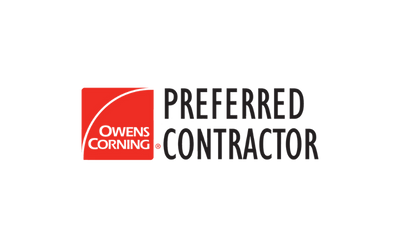Servicing all of Florida
Call us today
for a FREE quote
South Florida
(786) 379-5843
Tampa Bay
(727) 351-2697
Licensed & Insured
CGC1532474
CCC1331844
Everything You Need to Know About Zinc Metal Roof- Benefits & More
Zinc is one of the most remarkable metal roofing materials, especially in comparison to copper. In terms of longevity, performance, and patina, zinc metal roofs and copper have a lot in common. Copper, on the other hand, lacks zinc’s capacity to self-heal.
“For a square foot of Zinc roofing, the price ranges from $5.65 to $11.”
Zinc is an excellent choice for environmental friendliness and low toxicity because it can be recycled endlessly. Zinc production is also more efficient because of its lower melting point and lower overall energy use. Zinc may endure a century if placed correctly.
Is Zinc roofing worth that much? Are the benefits of Zinc roofs undeniable? Today R&D Roofing will represent this issue!
Is Zinc Roofing Trustworthy?
High-end construction and expensive remodels frequently use Zinc since it is non-ferrous (it doesn’t contain iron) and will not rust or corrode. As a result of this, Zinc is frequently employed in historic renovations.
Steel and aluminum are more commonly used in the United States. That included galvanized steels such as Galvalume or G-90. On the other hand, Zinc is gradually becoming more widely utilized as people learn its many benefits.
Unlike steel, Zinc has a long service life even without a protective covering. As a result, it’s an ideal choice for coastal residences and maritime surroundings due to its ability to withstand extreme weather and marine climates without being harmed.
Benefits of Zinc Metal Roofing
1. Corrosion Resistant
Zinc’s potential benefits include the following when used as a metal roofing material:
A zinc roof is more corrosion-resistant than other metal roofs. Self-healing zinc roofing means that it may be repaired over time if the zinc roofing material is scratched.
Furthermore, it’s easy to care for and requires minimal effort. If you’re in a difficult location, such as one exposed to rain and wind, you don’t have to worry about it.
It’s easier to work with zinc than other metals since it has a more aesthetically pleasing appearance. Architects find it appealing because it can be molded into fascinating shapes and curves while being sturdy.
As a result, it’s perfect for constructing flashing around chimneys and dormer windows, in addition to the roof’s primary structure.
2. Eco-Friendly Roofing
Zinc roofing is an eco-friendly strategy. It has several detractors because they question its impact on the environment. Although zinc roofs need less energy to generate than many other metal systems, it should be remembered that zinc has a lower melting point, making it simpler to form with less energy.
When the time comes to demolish the building or remove the roof, all of the materials used to construct the roof may be recycled.
However, the material’s endurance is a major benefit in terms of its environmental credentials. If installed in a typical climate, many manufacturers’ roofing panels and sheets will last for more than a century.
3. Zinc Consumes Less Energy
Zinc production has one of the lowest energy requirements of all non-ferrous metals.
Aside from copper and stainless steel being more energy-intensive, aluminum is also a significant drawback.
4. Consumes Less Fuel during Manufacture
Zinc has a naturally low melting point of 785 degrees Fahrenheit, which means that a bit of fuel is required to extract, alloy, smelt, and produce this metal.
5. Zinc is a Recyclable Material
As zinc is 100 percent recyclable, it may save up to 95 percent of its original energy content when it is reprocessed.
6. Zinc Roofing Can Persist for Decades
Zinc is well-known for its extended lifespan and low maintenance requirements. Zinc roofs may survive for millennia if constructed correctly.
7. In Terms of Toxicology: Zinc Has a Relatively Low Level
According to industry sources and experts, zinc metal roofs have a non-toxic discharge, making the metal relatively safe. Zinc is also a non-corrosive, environmentally favorable metal with an utterly pure water outflow.
Zinc Roofing Drawbacks
Despite its many advantages, there are certain things to consider when utilizing zinc for your roof.
For example, experts suggest that humidity causes corrosion on the bottom of zinc roofs. It is possible that water vapor will fall out of the air and become trapped in the roof when warm, moist air rises through the insulation, sheathing, and frame.
Zinc may also corrode when the conditions aren’t suitable for a patina.
To guarantee optimum moisture ventilation, zinc roofing manufacturers propose using zinc panels with a protective coating on the underside or placing a drainage layer under the roof.
Bottom Line
In order to have a zinc roof installed on your building, you’ll need a roofing professional like the crew at R&D Roofing to provide and install it. We provide the most reasonable solution in terms of metal roofs service.
WE ARE CERTIFIED IN THE FOLLOWING COMMERCIAL ROOFING SYSTEMS






